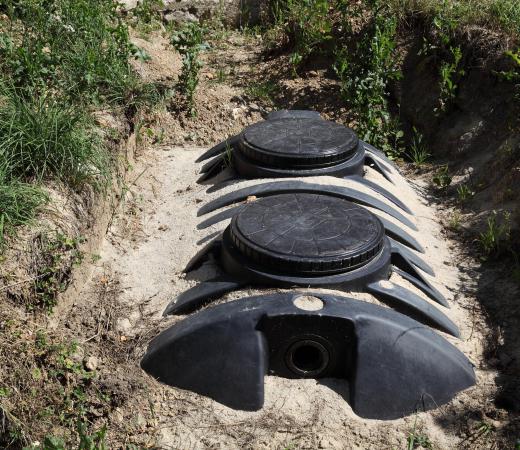A concrete septic tank is a septic tank cast from concrete. A septic tank is a large tank with one opening that allows sewer waste from a building to flow into the tank. There are several openings in the other side of the septic tank for the outflow of material. While in the tank, the solid waste settles to the bottom of the tank. The liquid travels out of the tank through perforated pipes and is dispersed into the leach field, a buried gravel bed.
Septic tanks are made from a variety of materials, including plastic, fiberglass, and concrete. Concrete septic tanks are widely used and widely accepted. There are advantages and disadvantages to each type of tank, including concrete.

Concrete septic tanks are permitted for use anywhere, unlike plastic septic tanks, which are not permitted in all states. Another benefit of concrete septic tanks is their durability. While heavy to move and install, their weight gives them an advantage. Damage is less likely to occur during the installation process, in contrast to lighter weight plastic or fiberglass tanks.
Concrete septic tanks, because of their weight, are also immune to another problem that may occur with lighter weight septic tanks. Plastic and fiberglass septic tanks may float, or come to the surface of the soil, months or years after installation. The weight of the concrete tank eliminates this problem. Another reason that concrete septic tanks can be a good choice is because they are so common. Whether installing a new tank, or repairing a damaged one, the person who works on the septic tank will undoubtedly have experience working with a concrete tank.
There are disadvantages to concrete septic tanks as well. Concrete tanks are the most expensive choice for septic tanks. Not only is the initial cost higher than septic tanks made of lighter weight material, but the hauling and installation cost may be higher as well because of the added difficulty of handling the heavy tank.
While it is more difficult to damage a concrete septic tank during installation, it is possible. Cracks in a concrete septic tank are an expensive problem. A septic tank that has a crack in it can contaminate the groundwater by allowing waste to seep out and the groundwater that seeps in can interfere with the ability of the septic system to drain properly.
Finally, not all concrete is equal. Purchase a concrete septic tank from an established retailer to ensure that the pre-cast concrete tank is well made. Poor quality concrete will not last long, and the tank can disintegrate underground over time.
